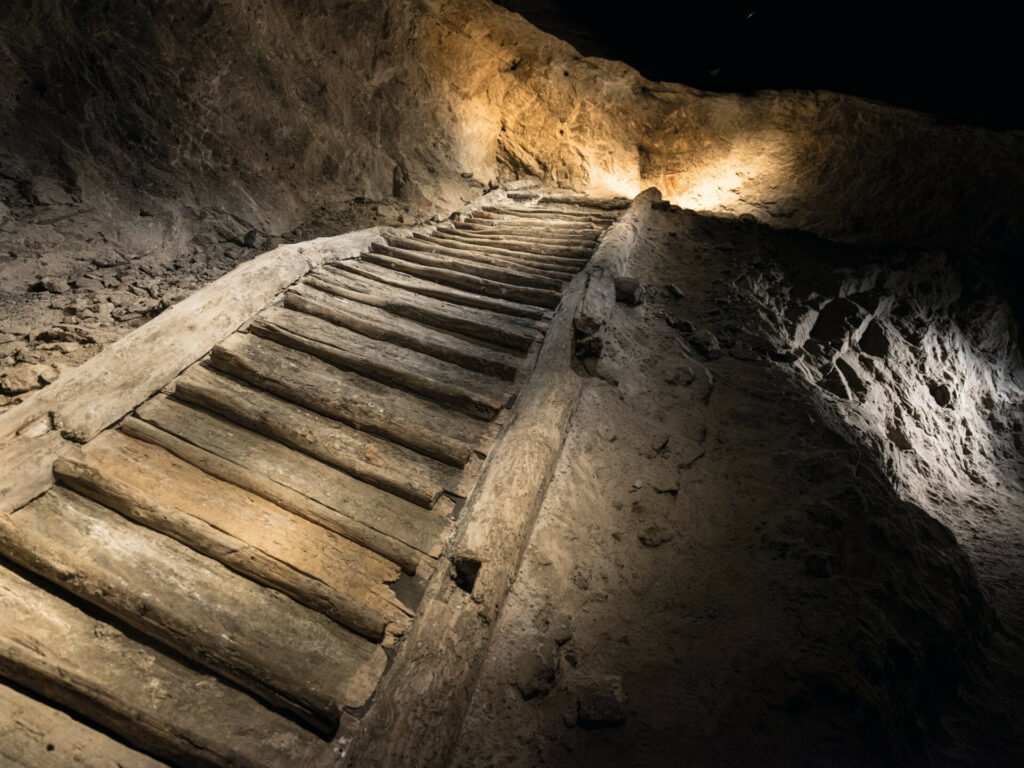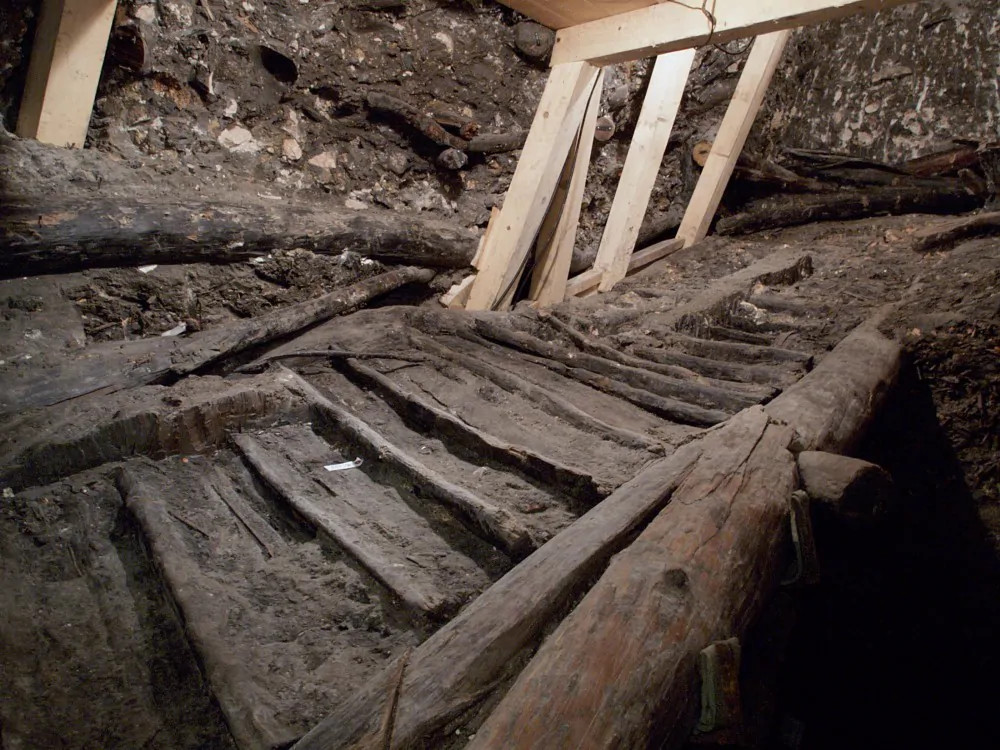Unveiling a Bronze Age Engineering Feat

In the picturesque Austrian town of Hallstatt, a remarkable discovery has shed new light on our ancient past. Deep within the Christian von Tuschwerk salt mine, archaeologists unearthed what is now considered the oldest wooden staircase in Europe, dating back over 3,400 years.
A Glimpse into Bronze Age Ingenuity

This extraordinary find, made in 2002, offers a fascinating window into the engineering prowess of our Bronze Age ancestors. Scientific analysis, including tree-ring dating, revealed that the staircase was used to transport salt – often referred to as “white gold” – out of the mountain between 1343 and 1344 BCE.
Unique Design and Remarkable Preservation

The staircase’s design is truly one-of-a-kind, featuring 1.2-meter-wide steps that allowed for the transport of heavy loads while facilitating two-way traffic. The woodworking techniques employed, such as transverse cutting with bronze axes, showcase the advanced craftsmanship of the era.
Challenges of Preservation and Display
The Salt Mine’s Double-Edged Sword

While the salty environment of the Hallstatt mine contributed to the staircase’s exceptional preservation, it also presented unique challenges. When the structure was temporarily moved to Vienna for analysis in 2014, it quickly began to deteriorate. To ensure its longevity, the staircase was returned to Hallstatt in 2015 and is now on display within the “show-mine.”
A Testament to Human Innovation

The discovery of this ancient wooden staircase not only provides invaluable insights into Bronze Age salt mining practices but also stands as a testament to the enduring spirit of human innovation. As we continue to uncover the secrets of our shared history, the Hallstatt staircase remains a timeless treasure, bridging the gap between our present and our distant past.

